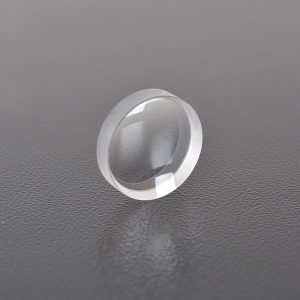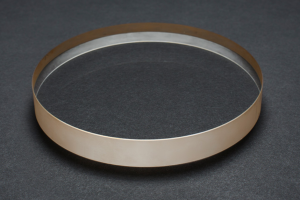
Precision Lens Factory: the Core Manufacturing Base of Optical Technology
From smartphone cameras to autonomous driving lidar, precision lenses quietly push the boundaries of science and technology with nanometer-level precision. As the core of optical manufacturing, these micron-level surfaces not only define the clarity of medical imaging and the insight of satellite lenses, but also continue to break through the limits of materials and processes in the wave of intelligent manufacturing, casting the “foundation of light” for future scenes such as VR equipment and quantum computing.
In today’s rapid development of modern science and technology, optical technology plays a vital role as the foundation of many high-tech fields. Whether it is smartphones, medical equipment, aerospace, or self-driving cars, precision lenses are indispensable core components. And precision lens factories, as the manufacturing base of these high-precision optical components, carry the important mission of promoting the advancement of optical technology.
1. Definition and role of precision lens factories
Precision lens factories are factories specializing in the design, manufacture and testing of high-precision optical lenses. Its main products include various types of lenses, prisms, filters and other optical components, which are widely used in imaging systems, laser equipment, optical instruments and other fields. The core task of the precision lens factory is to produce optical components that meet high-precision requirements through advanced manufacturing processes and strict quality control to meet the needs of different industries.
2. Manufacturing process of precision lenses
1. Design and simulation
Before manufacturing precision lenses, optical design is required first. Designers use professional optical design software (such as Zemax, Code V, etc.) to simulate and optimize the optical path of the lens to ensure that the optical performance of the lens reaches the expected goal. The design stage also needs to consider factors such as material selection, lens shape, and radius of curvature.
2. Material selection and processing
Precision lenses are usually made of optical glass, quartz, crystal, etc. These materials have the characteristics of high light transmittance, low scattering, and high temperature resistance. After the material is selected, the lens processing process includes cutting, grinding, polishing and other steps. Grinding and polishing processes are the key to manufacturing high-precision lenses, and usually require the help of high-precision CNC machine tools and polishing equipment to ensure the surface finish and shape accuracy of the lens.
3. Coating technology
In order to improve the optical performance of the lens, it is usually necessary to coat one or more layers of optical film on the surface of the lens. Coating technology can enhance the transmittance of lenses, reduce reflection, and improve scratch resistance. Common coating processes include vacuum coating, ion beam sputtering, etc.
4. Inspection and quality control
Quality control is a crucial link in the manufacturing process of precision lenses. The optical performance, surface finish, shape accuracy, etc. of the lens need to be measured by high-precision inspection equipment. Commonly used inspection equipment includes interferometers, profilometers, spectrometers, etc. Only through strict inspection can we ensure that the performance of the lens meets the design requirements.
3. Technical challenges of precision lens factories
1. High precision requirements
The manufacturing accuracy of precision lenses is usually required to reach the micron or even nanometer level. For example, the surface roughness of the lens is usually required to be less than 1 nanometer, and the error of the radius of curvature also needs to be controlled within a very small range. This places extremely high demands on manufacturing processes and equipment.
2. Complex optical design
With the continuous development of optical technology, the design of lenses is becoming more and more complex. For example, the design and manufacturing of new lenses such as aspheric lenses and free-form lenses are difficult and require the help of advanced processing technology and equipment.
3. Innovation of materials and processes
In order to meet the needs of different application scenarios, precision lens factories need to continuously explore new materials and new processes. For example, lenses in special bands such as infrared lenses and ultraviolet lenses require different materials and coating technologies.
IV. Application fields of precision lens factories
1. Consumer electronics
Precision lenses are the core components of imaging systems in consumer electronics products such as smartphones, cameras, VR/AR devices, etc. As consumers’ requirements for imaging quality continue to increase, the manufacturing technology of precision lenses is also constantly improving.
2. Medical equipment
In the medical field, precision lenses are widely used in endoscopes, microscopes, laser surgical equipment, etc. High-precision lenses can improve the imaging quality and treatment effect of medical equipment.
3. Aerospace
The aerospace field has extremely high performance requirements for optical components, and precision lenses play an important role in satellites, telescopes, lidars and other equipment.
4. Autonomous driving and intelligent manufacturing
Lidars, cameras and other equipment in autonomous driving cars require high-precision lenses to achieve environmental perception and navigation. Optical detection equipment in the field of intelligent manufacturing also cannot do without the support of precision lenses.
V. Future Development Trends
1. Intelligent Manufacturing and Automation
With the advancement of Industry 4.0, precision lens factories are moving towards intelligence and automation. By introducing technologies such as robots and artificial intelligence, production efficiency can be improved and manual errors can be reduced.
2. New Materials and New Processes
In the future, precision lens factories will continue to explore new materials and new processes to meet the ever-changing market needs. For example, the application of new materials such as nanomaterials and composite materials will further enhance the performance of lenses.
3. Green Manufacturing
Against the background of increasing environmental awareness, precision lens factories are also actively exploring green manufacturing technologies to reduce energy consumption and environmental pollution in the production process.
Conclusion
As the core manufacturing base of optical technology, precision lens factories carry the important mission of promoting scientific and technological progress. With the continuous development of science and technology, the manufacturing technology of precision lenses will continue to break through and provide more advanced optical solutions for all walks of life. In the future, precision lens factories will continue to explore innovations in the fields of intelligent manufacturing, new materials, green manufacturing, etc., and make greater contributions to the development of optical technology.
Hanzhong Brisun Optics Co., Ltd. Is the high precision optical element manufacturer provides customized production of Various optical lenses, including spherical lens, cylindrical lens, optical window, mirror, prism, filter, metal base mirror and other high-precision optical elements. The base materials include various optical glass, fused quartz, calcium fluoride (CaF2), zinc selenide (ZnSe), germanium (GE), silicon (SI), sapphire, metal and other materials. And provide antireflective film, high reflection film, spectroscopic film, metal film and other optical coatings.
Welcome to OEM and Purchasing!


